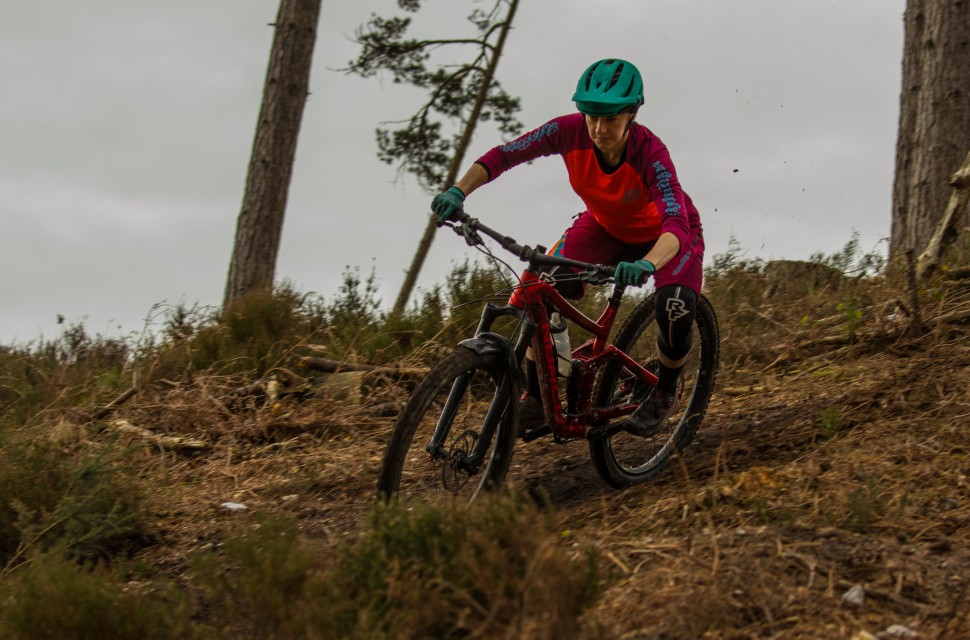5 mountain bike setup mistakes to avoid - we've been there so you don't have to

Although bike setup can be a pretty personal thing, there are some things that just should, or shouldn't, be done. Sorting out some little setup niggles can be the difference between night and day where cycling comfort, happiness and performance is concerned. Here we run through some mountain bike setup mistakes that at least one of us here in the off-road office has made in their early days of cycling, all so you don't have to. No need to thanks us, it's all part of the service.
- Five ways to make your bike faster for free
- The 11 things you should do as soon as you get a new bike
1. Too much air in your tyres
We reckon that the fastest way to improve, or indeed, impair your bikes performance is to fiddle with the tyres. Whether that means a full-blown tyre swap out for something with a grippier compound or simply setting the correct pressures for the task at hand, both will have dramatic effects on the ride.
Modern wider rims will generally allow you to get away with running less pressure in your tyres, especially when combined with a tubeless setup. Less pressure means more grip and more grip means more fun! Too much pressure and your ride might be a bouncing and jittery affair with less grip than you’d like. Not enough air and you are in danger of damaging your rims or puncturing the tyre.
As a ballpark figure for mountain bikes, we reckon that an average 70kg rider can roll with 22PSI in the front tyre and 24PSI in the rear when using an averagely wide 25mm internal diameter rim and 2.3” tyres. Riders that weigh less can afford to let more air out, whilst heavier riders will need to add some, experiment by going up a PSI or two at a time.
We recommend investing in a digital tyre pressure gauge and keeping track of those numbers!
2. Not enough lubrication
Not enough lubrication can cause a problem in many walks of life, not least where your drivetrain is concerned (see, smut avoided...). Keeping your chain in good nick will allow you to eek out the best performance from your bike, help to keep the drivetrain running smoothly and importantly quietly at the same time. It will prolong the life of the chain, cassette and chainrings helping you spend less on replacement parts over the lifetime of the bike.
A dry, squeaky chain is music to no-one's ears so make sure you keep the chain dosed up on it if and when it becomes dry. Our tips for applying chain lube are thus:
- Apply to the rollers of the chain and not the outside, apply the minimum amount of lube specifically to the inner link rollers only – anywhere else is a waste of lube.
- Find a lube in a dropper bottle, one where a single drop is dispensed at a time.
- Rotate the cranks backwards and allow a single drop to penetrate each of the rollers which separate the link plates. You’re looking to allow the lube to get inside the roller and form a protective barrier between the moving metal surfaces. You need a drop and not more. More will only lead to a chain that attracts more dirt, more quickly.
3. Incorrect saddle height or angle
4. Not taking the correct tools
Not taking the kit with you to get you out of trouble and on your way home is a big faux pas which can have consequences ranging from mildly annoying to downright dangerous. Of course, bikes are complicated things and there is no way that you'd be feasibly able to take everything with you for every eventuality, but there are some essentials that should go in your pack.
Checklist:
- Inner tube
- Tyre lever or two
- Tubeless repair kit
- Quick link
- Pump
- Shock pump
- Zip ties
- Small first aid kit
- Small chain lube
- Tyre boot
5. Incorrect suspension set up
It might be the most complicated thing in cycling to get your head around but some time taken to learn your rebound from your compression and your sag from your bottom out will certainly be time well spent. As with tyre pressures, the pressure in your fork and shock and the subsequent characteristics dialled in can have a big effect on ride quality and grip.
As an overview you ideally want your bike to react the same at the front as it does at the rear. We'd advise taking time to get your fork and shock working in harmony, if the front moves just a little then you only want the rear to move a little and so on. If you are unsure of what all the knobs and dials do then its best to do some research and learn how the settings affect the bike. For example, dialling on too much rebound damping will leave a bike that feels slow to react and something like not enough compression damping could mean the bike dives into its travel.
In brief:
Rebound Damping - The setting that controls the speed at which your suspension will re-extend after compressing
Compression Damping - the setting that regulates the force that affects how the suspension through its travel.
Get some advice from a friend or ask your local bike shop for some help then go out and ride (repeat the same trail) changing the settings one at a time. Remember to write down what setup you started with just in case you need to return there!
You might also like:
- off-road's dirty shorts - Jon's trail pack essentials
- Win ION bike gear on Facebook - Here's how....
- Vlog: MTBMeetup Llandegla - a social MTB event organised on Twitter!













